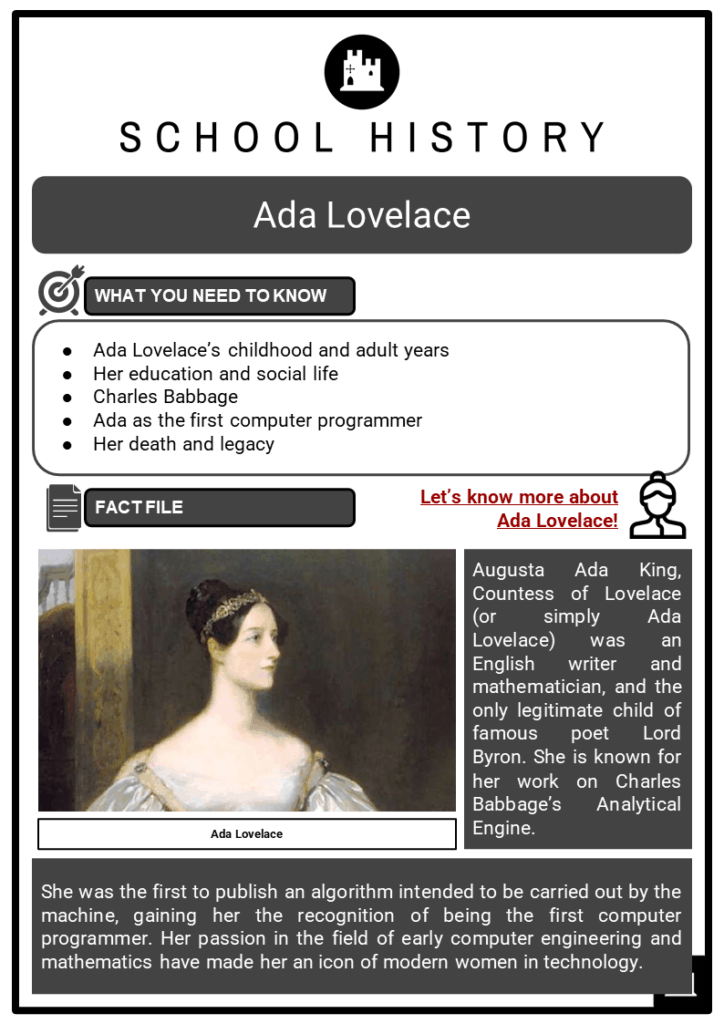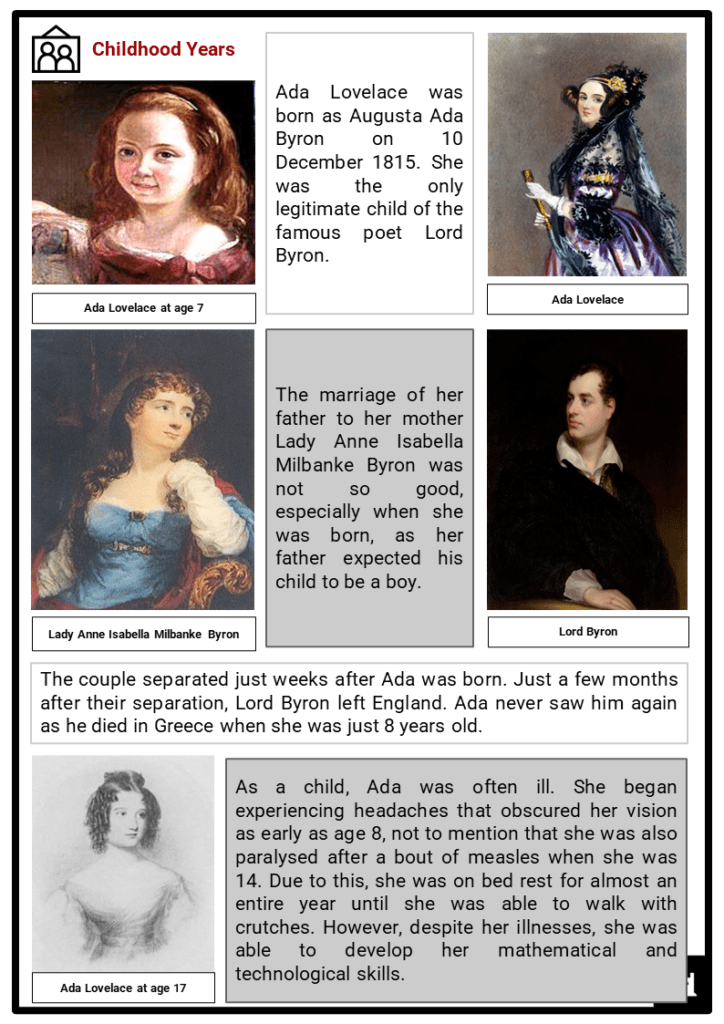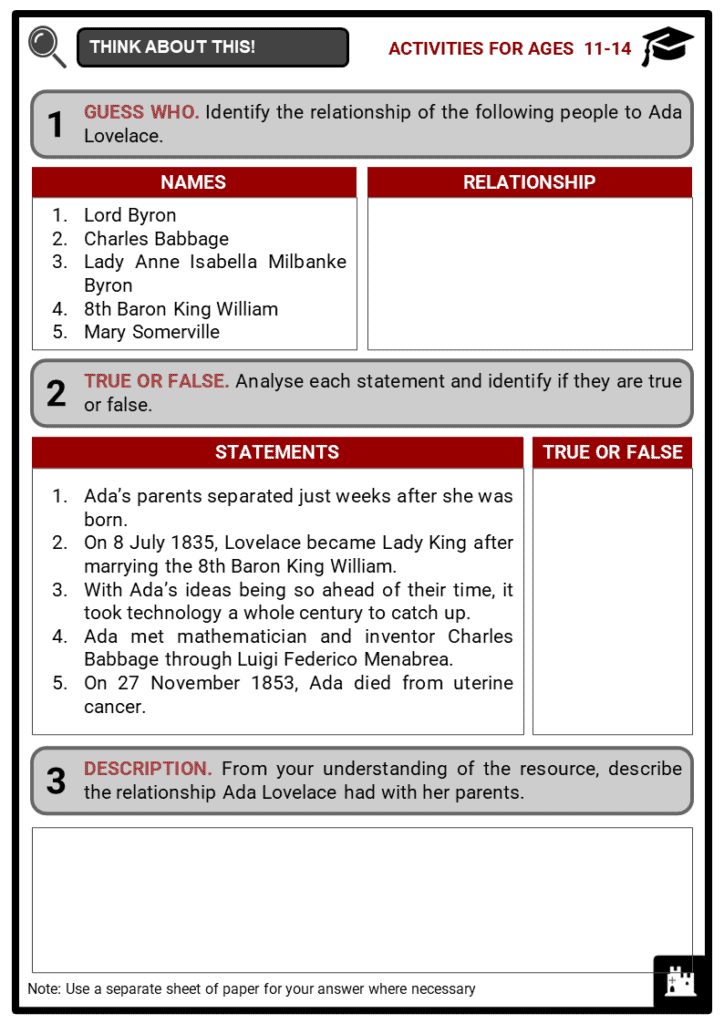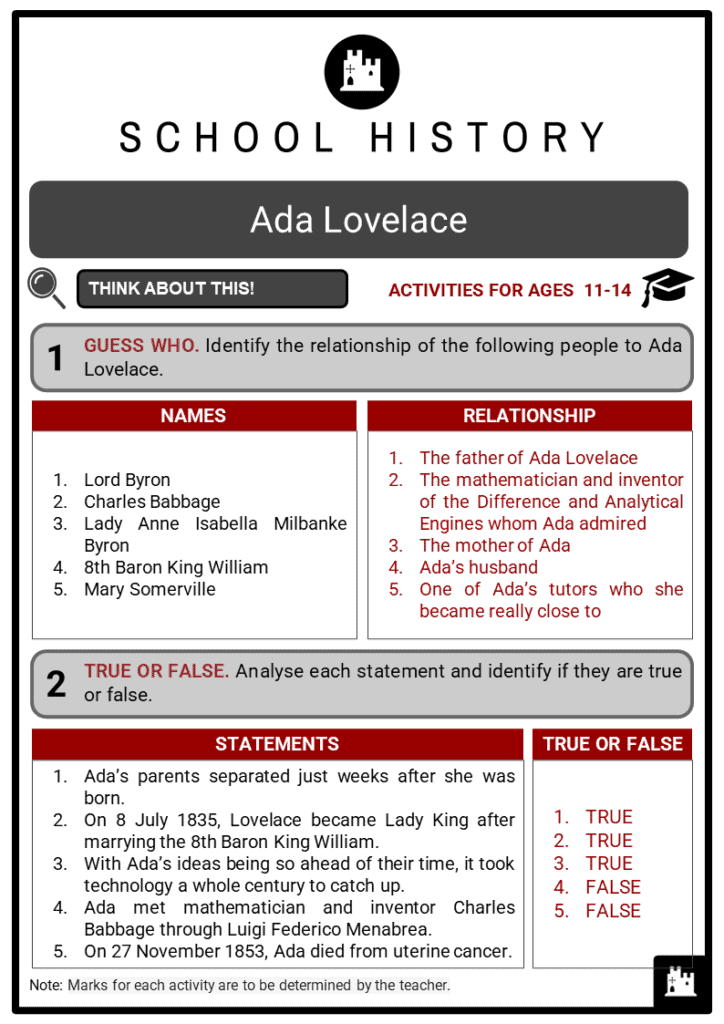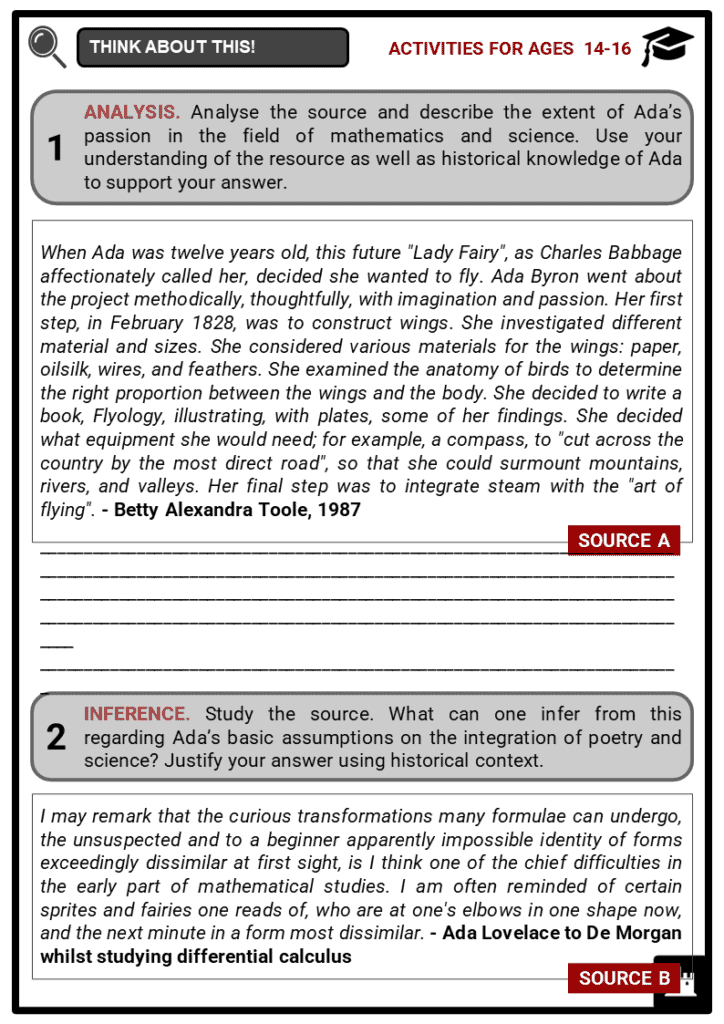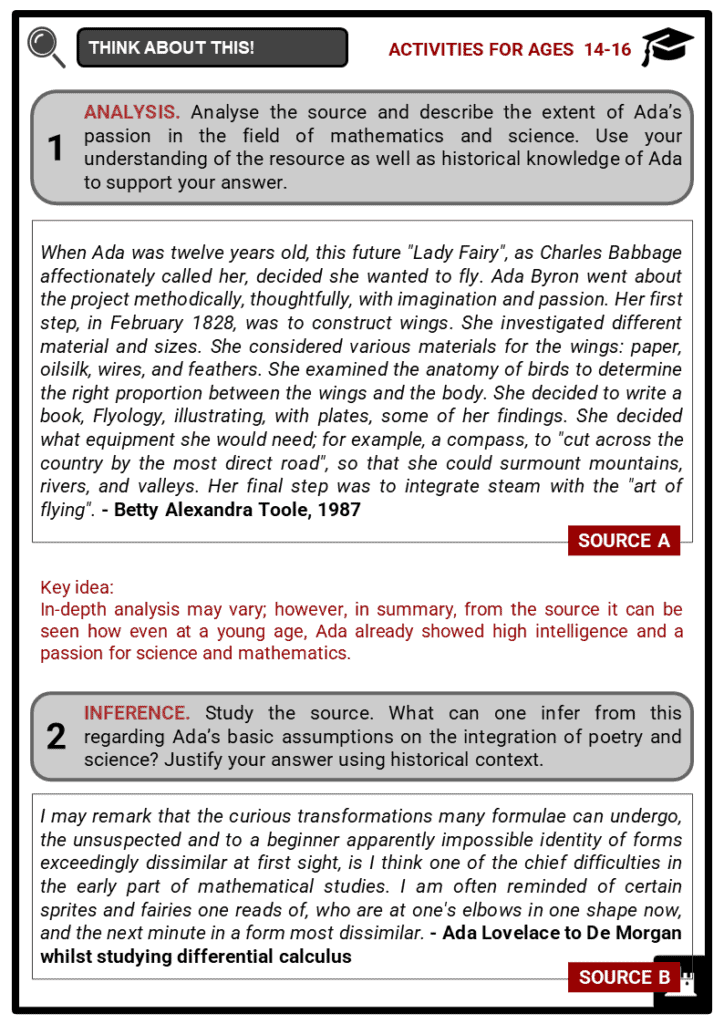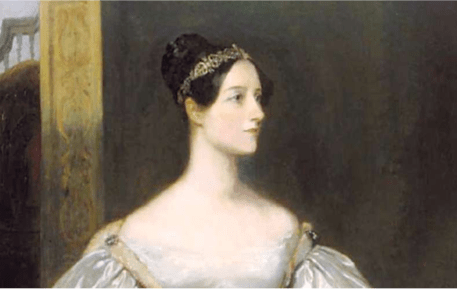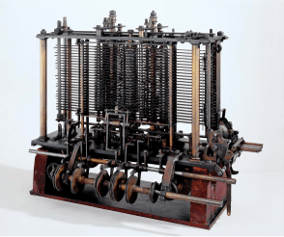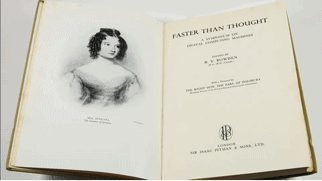Download Ada Lovelace Worksheets
Do you want to save dozens of hours in time? Get your evenings and weekends back? Be able to teach Ada Lovelace to your students?
Our worksheet bundle includes a fact file and printable worksheets and student activities. Perfect for both the classroom and homeschooling!
Table of Contents
Add a header to begin generating the table of contents
Summary
- Ada Lovelace’s childhood and adult years
- Her education and social life
- Charles Babbage
- Ada as the first computer programmer
- Her death and legacy
Key Facts And Information
Let’s know more about Ada Lovelace!
- Augusta Ada King, Countess of Lovelace (or simply Ada Lovelace) was an English writer and mathematician, and the only legitimate child of famous poet Lord Byron. She is known for her work on Charles Babbage’s Analytical Engine.
- She was the first to publish an algorithm intended to be carried out by the machine, gaining her the recognition of being the first computer programmer. Her passion in the field of early computer engineering and mathematics have made her an icon of modern women in technology.
Childhood Years
- Ada Lovelace was born as Augusta Ada Byron on 10 December 1815. She was the only legitimate child of the famous poet Lord Byron.
- The marriage of her father to her mother Lady Anne Isabella Milbanke Byron was not so good, especially when she was born, as her father expected his child to be a boy.
- The couple separated just weeks after Ada was born. Just a few months after their separation, Lord Byron left England. Ada never saw him again as he died in Greece when she was just 8 years old.
- As a child, Ada was often ill. She began experiencing headaches that obscured her vision as early as age 8, not to mention that she was also paralysed after a bout of measles when she was 14. Due to this, she was on bed rest for almost an entire year until she was able to walk with crutches. However, despite her illnesses, she was able to develop her mathematical and technological skills.
Education and Social Life
- Ada had an unusual upbringing as a member of an aristocratic family in the mid-1800s. Though it was an unusual course of study for a woman in 19th-century England, her mother insisted that she be taught challenging subjects such as mathematics and science. This was because her mother believed that through rigorous studies she would not become like her father who was often moody and unpredictable.
- Ada started to show a real talent for mathematics and science. At the age of 12, she was able to conceptualise a flying machine after studying the anatomy of birds and the suitability of various materials. With teaching from intellectual people such as social reformer William Frend and mathematicians Augustus De Morgan and Mary Somerville, her interest in mathematics grew to dominate most of her adult life.
Adult Years
- Ada became very close friends with Somerville.
- Due to her intelligence and connections, she was an acquaintance to many known people including scientists Andrew Crosse, Sir David Brewster, Charles Wheatstone and Michael Faraday, as well as author Charles Dickens.
- On 8 July 1835, Lovelace became Lady King after marrying the 8th Baron King William.
- The couple had three children named Byron, Anne Isabella and Ralph Gordon.
- Since Ada was a descendant of the extinct Barons Lovelace lineage, her husband was made Earl of Lovelace and Viscount Ockham, making Ada the Countess of Lovelace.
First Computer Programmer
- When Ada was 17, she met mathematician and inventor Charles Babbage through Somerville. Babbage is known as the father of the computer for his invention of the Difference Engine intended to perform mathematical calculations.
- He also created plans for an Analytical Engine that could handle more complex calculations.
- Ada became fascinated with his ideas. She used her closeness with Somerville to visit Babbage as often as she could. Her intelligence also amazed Babbage and he often called her ‘The Enchantress of Number’.
- As she was able to see Babbage’s Analytical Engine prototype firsthand, she was later asked to translate into English a French article about it for a Swiss journal. The article was written by Italian engineer Luigi Federico Menabrea. Though she was initially told to merely translate, she also added in her own thoughts and ideas about the engine. This made the article three times longer than the original.
- Despite the difficulty in explaining the engine’s concept, Ada was able to complete the article after 9 months. Her work, marked by her initials A.A.L., was published in 1843 in an English science journal.
- In her notes on Babbage’s Analytical Engine, she theorised a method for the engine to conduct repetitions of a series of instructions. She also described how codes could be created for the device to handle letters and symbols along with numbers.
- Her hard work led to her article being considered the first ever published algorithm specifically tailored to the implementation on a computer. As a result, Ada is often cited as the first computer programmer.
Death and Legacy
- On 27 November 1852, Ada died from uterine cancer at the age of 36. Despite not having known her father, at her request her body was buried next to him in Hucknall, England at the graveyard of the Church of St. Mary Magdalene. A memorial plaque in Latin is written in the chapel attached to Horsley Towers.
- With Ada’s ideas being so ahead of their time, it took technology a whole century to catch up. More than 100 years after her death, Ada’s notes on Babbage’s Analytical Engine were re-published as an appendix to Faster than Thought: A Symposium on Digital Computing Machines by B.V. Bowden.
- Her notes inspired Alan Turing to create the first modern computer in the 1940s.
- In the 1970s, the US Department of Defense developed a high-order computer programming language that superseded the ones currently being used in the military. In 1979, this programming language was named Ada in honour of Lovelace.
- Ada’s contributions and passion in the field of early computer engineering and mathematics have made her an icon of modern women in technology.
Image sources:

